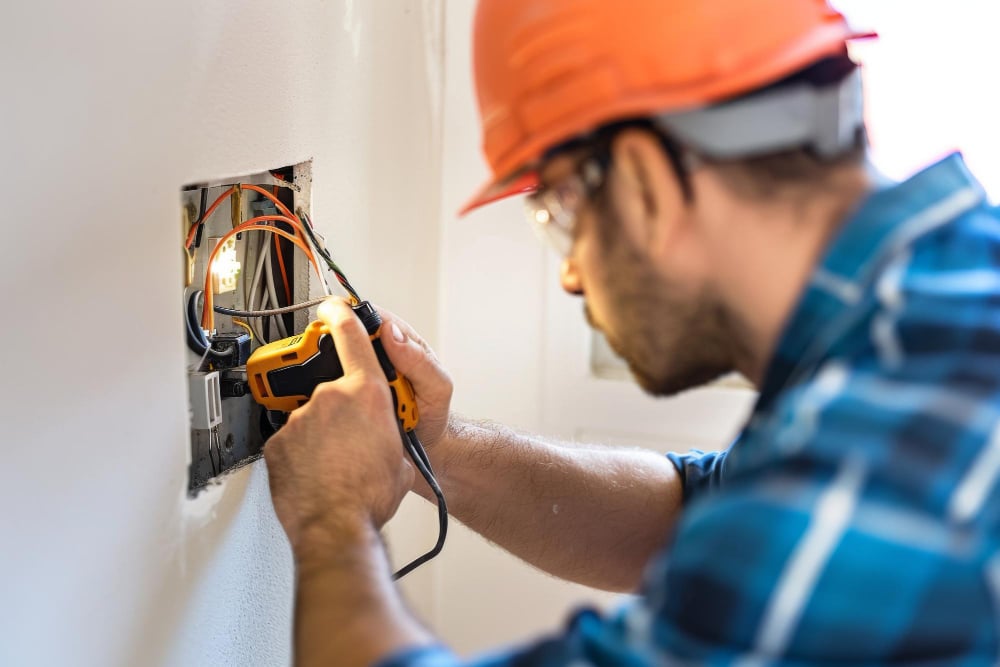Wired vs. Wireless
1. Installation and Setup:
- Wired: Wired systems require extensive cabling throughout the home, often making installation more complex and time-consuming. This approach is best suited for new builds or major renovations where wiring can be easily integrated.
- Wireless: Wireless systems are much easier to install, as they don’t require running cables through walls. This makes them ideal for retrofitting existing homes or adding smart technology to individual rooms.
2. Reliability and Performance:
- Wired: Wired systems are known for their reliability and consistent performance. They are less prone to interference and offer faster data transmission, making them ideal for critical applications like security and high-bandwidth tasks.
- Wireless: Wireless systems, while generally reliable, can be affected by signal interference, range limitations, and network congestion. However, advancements in wireless technology, such as mesh networks, have significantly improved their stability and performance.
3. Flexibility and Scalability:
- Wired: Once installed, wired systems are more difficult to modify or expand. Adding new devices typically requires additional wiring, which can be disruptive and costly.
- Wireless: Wireless systems are highly flexible and scalable. New devices can be easily added or relocated without the need for additional wiring, making it simple to expand or reconfigure your smart home setup.
4. Aesthetics and Design:
- Wired: Wired systems often require visible cables or conduit, which can impact the aesthetics of your home unless carefully planned. However, with proper planning, wiring can be concealed to maintain a clean look.
- Wireless: Wireless systems eliminate the need for visible wiring, offering a cleaner, more streamlined appearance. This is particularly advantageous in preserving the aesthetics of modern or minimalist interior designs.
5. Cost:
- Wired: The initial cost of a wired system can be higher due to the need for professional installation, materials, and labor. However, they may offer long-term savings in terms of reliability and maintenance.
- Wireless: Wireless systems typically have lower upfront costs since they require less infrastructure and are easier to install. However, depending on the scale and complexity, ongoing costs for network maintenance and upgrades may be a consideration.
In summary, both the technologies works. The choice between wired and wireless smart home technologies depends on your requirements, the stage of your home’s construction or renovation, and your priorities in terms of reliability, flexibility, and aesthetics. CogCons team will help you the right option for your requirements.
Other Related Posts
August 25, 2024
Zigbee vs WiFi Which is Better for Smart Home Automation? When it comes to Smart…
August 10, 2024
Brief Comparison: Wi-Fi vs. Zigbee vs. KNX Wi-Fi: Overview: Wi-Fi is a widely used wireless…
August 10, 2024
Installation Process The installation process for your smart home system is designed to be seamless…
August 10, 2024
How to Get Started with CogCons This overview three simple steps to get started with…
August 10, 2024
Customizable Solutions for Every Home At CogCons, we understand that every home is unique, and…
August 10, 2024
Choose the Right Solutions for Your Home Finding the perfect smart home solution is all…
Get Your Estimate
Visit Experience Center
Bengaluru
HSR Layout
3rd Floor, 1, 20th Main Rd, Agara Village, 1st Sector, HSR Layout, Bengaluru, Karnataka, 560102.






